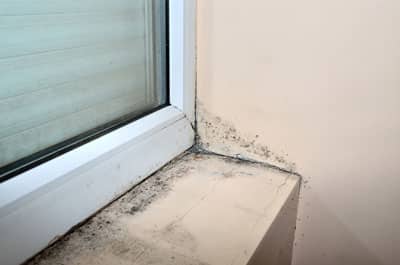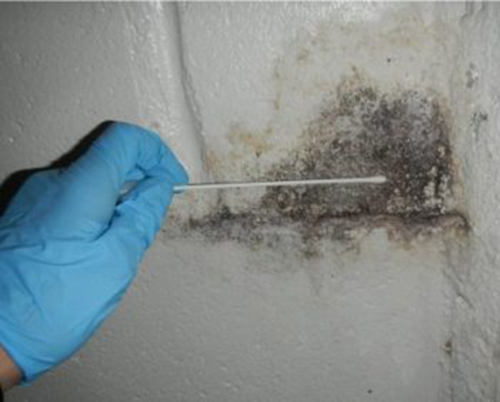Support on What to Do After Mold Remediation
Wiki Article
Specialist Tips for Post Mold Remediation Success
In the realm of mold and mildew removal, effectively removing mold and mildew is just half the fight; the real obstacle exists in stopping its reappearance. By sticking to skilled tips and finest practices, individuals can protect their rooms versus mold resurgence and preserve a healthy interior setting.
Screen Humidity Degrees Routinely
Normal surveillance of humidity degrees is crucial in making certain the performance of article mold removal efforts. After finishing mold remediation treatments, preserving optimal moisture levels is crucial to protect against mold and mildew re-growth and guarantee a healthy indoor environment. Tracking humidity levels permits for early discovery of any type of spikes or variations that might possibly result in mold and mildew resurgence. High moisture degrees above 60% produce a helpful atmosphere for mold and mildew to thrive, making routine keeping track of a positive measure to stop any future mold and mildew problems - what to do after mold remediation.Additionally, developing a routine timetable for humidity checks, specifically in high-risk locations such as kitchen areas, basements, and shower rooms, is a positive strategy to mold prevention. By consistently keeping an eye on moisture levels, property owners can properly reduce the threat of mold reoccurrence and preserve a healthy and balanced indoor atmosphere post-remediation.
Conduct Thorough Inspections Post-Remediation
Following the conclusion of mold remediation procedures, it is vital to carry out extensive inspections to confirm the efficiency of the removal procedure. These post-remediation evaluations are vital in making certain that the mold problem has been efficiently resolved which there is no reappearance or remaining mold growth. Evaluations ought to be accomplished by certified experts that have expertise in identifying mold and assessing indoor air quality.During these evaluations, various methods such as visual assessments, air sampling, and surface area tasting might be utilized to completely assess the remediated areas. Visual assessments entail a thorough examination of the properties to look for any kind of noticeable indications of mold growth or water damages. Air tasting assists in identifying the airborne mold and mildew spore degrees, while surface area tasting can spot mold and mildew particles on surfaces.
Implement Appropriate Air Flow Approaches
After ensuring the efficiency of the mold and mildew remediation procedure via complete assessments, the following vital step is to concentrate on implementing appropriate ventilation approaches. Sufficient air flow is crucial in stopping mold and mildew reoccurrence by controlling moisture levels and advertising air blood circulation.
Proper ventilation not only aids in stopping mold and mildew development but also adds to the general wellness and convenience of owners. By ensuring sufficient ventilation throughout the residential or commercial property, you can decrease the danger of mold and mildew regrowth and develop a much healthier living environment. Regular maintenance of air flow systems, consisting of cleaning and filter replacements, is important to maintaining reliable air flow. Consulting with heating and cooling experts can supply more understandings into enhancing air flow strategies for your particular residential property demands.

Usage Mold-Resistant Materials for Repairs
To improve the long-term performance of mold removal efforts, including mold-resistant materials for repairs is critical in minimizing the danger of future mold and mildew growth. Mold-resistant products are developed to hold up against wetness and hinder mold development, making them an important selection for areas vulnerable to dampness and humidity. When fixing areas impacted by mold and mildew, using products such as mold-resistant drywall, mold-resistant paints, and mold-resistant caulking can aid stop mold and mildew recurrence.Mold-resistant drywall is an excellent option to standard drywall in locations like washrooms and basements where moisture levels are higher. When subjected to damp problems, this type of drywall has an unique layer that stands up to mold development also. In addition, making use of mold-resistant paints having antimicrobial representatives can better hinder mold and mildew advancement on ceilings and walls.
In areas where moisture prevails, such as kitchens and bathrooms, making use of mold-resistant caulking around windows, sinks, and tubs can help secure out water and protect against mold and mildew from taking hold in cracks and holes. By purchasing these mold-resistant materials throughout fixings post-remediation, you can dramatically lower the probability of future mold issues and keep a healthier indoor environment.
Maintain Sanitation and Address Water Issues
After mold removal, it is critical to maintain a clean environment to stop the regrowth of mold and mildew. Leakages, water breach, or high moisture degrees can create the ideal breeding ground for mold, so it is necessary to fix any water-related problems right away.To preserve tidiness, take into consideration making use of HEPA filters in vacuum cleaners and air cleansers to catch mold and mildew spores and prevent their circulation in the air. Guaranteeing appropriate ventilation in locations susceptible to moisture build-up, such as shower rooms and cooking areas, can help maintain moisture degrees in check. By staying attentive regarding cleanliness and addressing water issues immediately, you can successfully avoid mold reinfestation and keep a healthy and balanced interior atmosphere.
Final Thought

In the world of mold removal, effectively removing mold and mildew is just half the fight; the real challenge lies in stopping its reappearance. After finishing mold and mildew remediation treatments, maintaining optimum humidity degrees is essential to stop mold and mildew re-growth and make certain a healthy interior atmosphere. High moisture levels over 60% create a helpful After mold remediation environment for mold to grow, making normal keeping track of a positive measure to prevent any kind of future mold and mildew problems.
To improve the long-lasting performance of mold and mildew removal efforts, integrating mold-resistant products for repair work is critical in mitigating the risk of future mold and mildew growth. After mold remediation, it is crucial to maintain a clean setting to prevent the regrowth of mold and mildew.
Report this wiki page